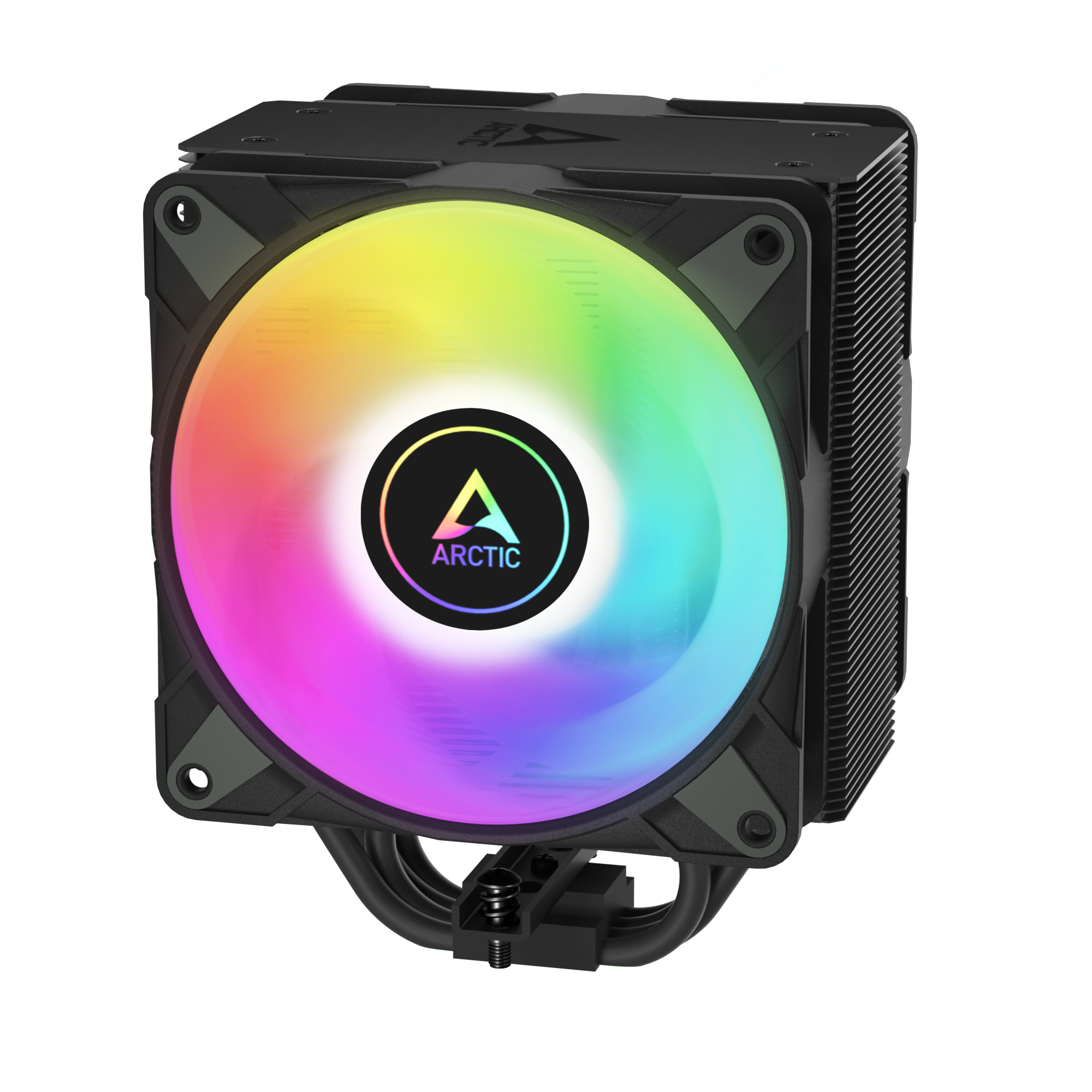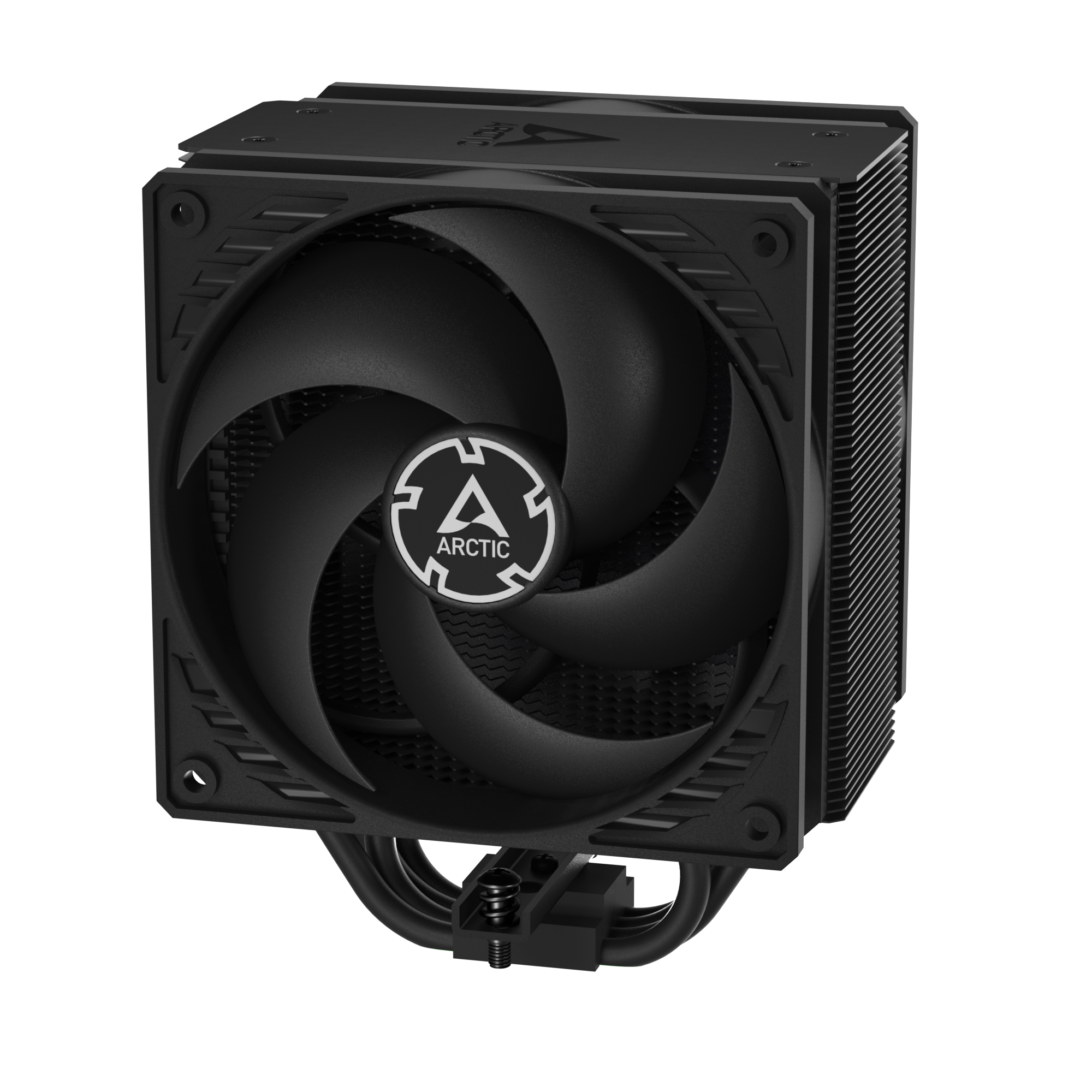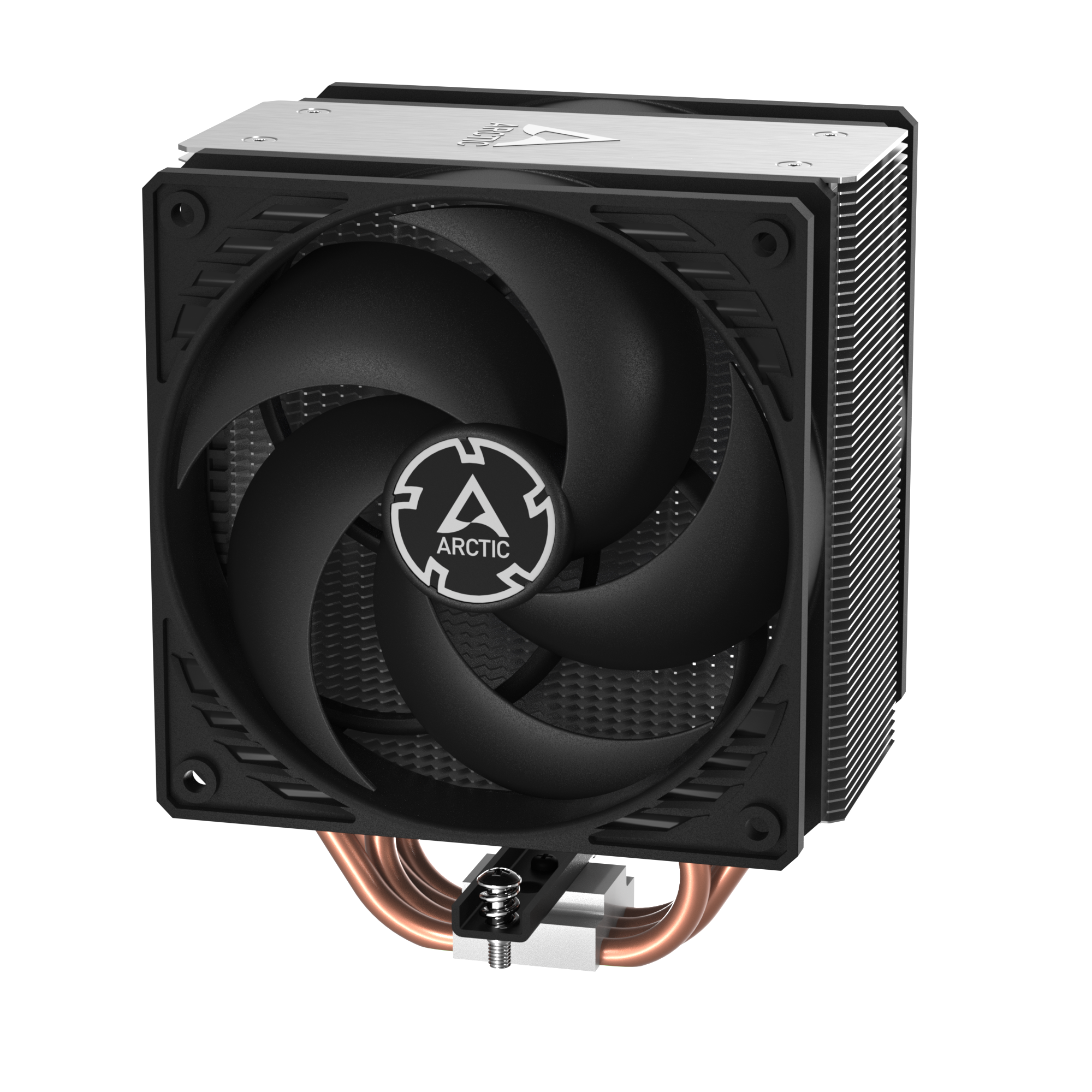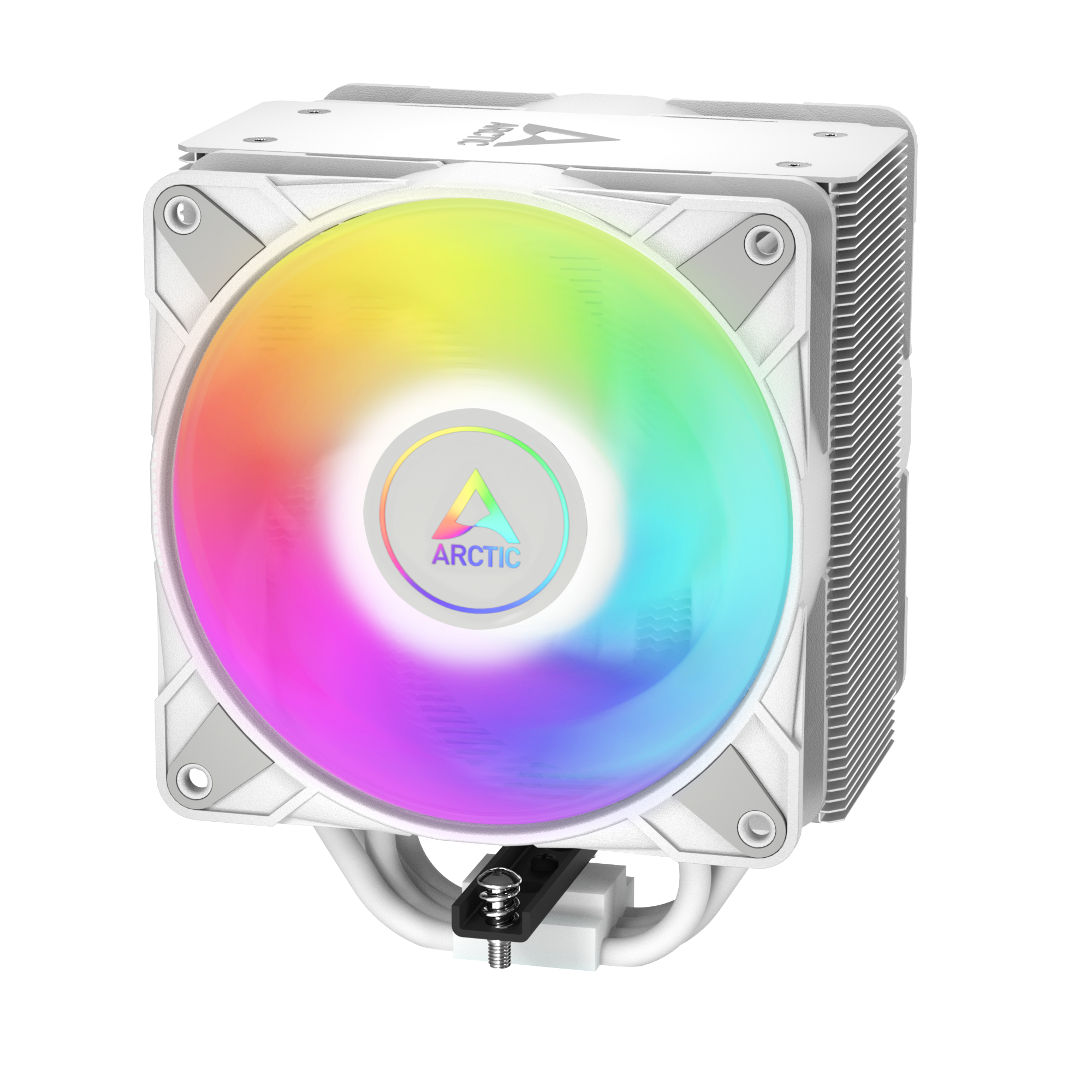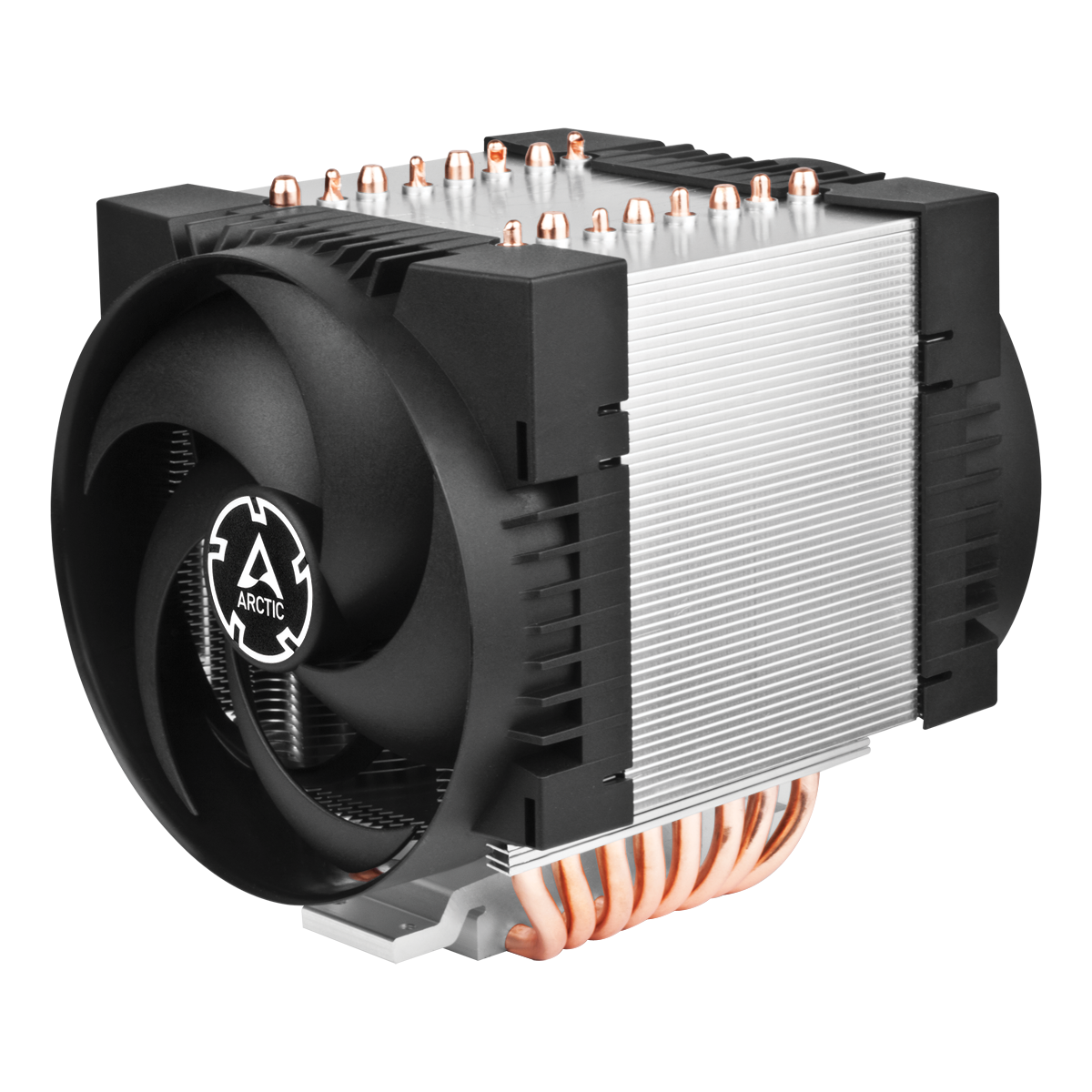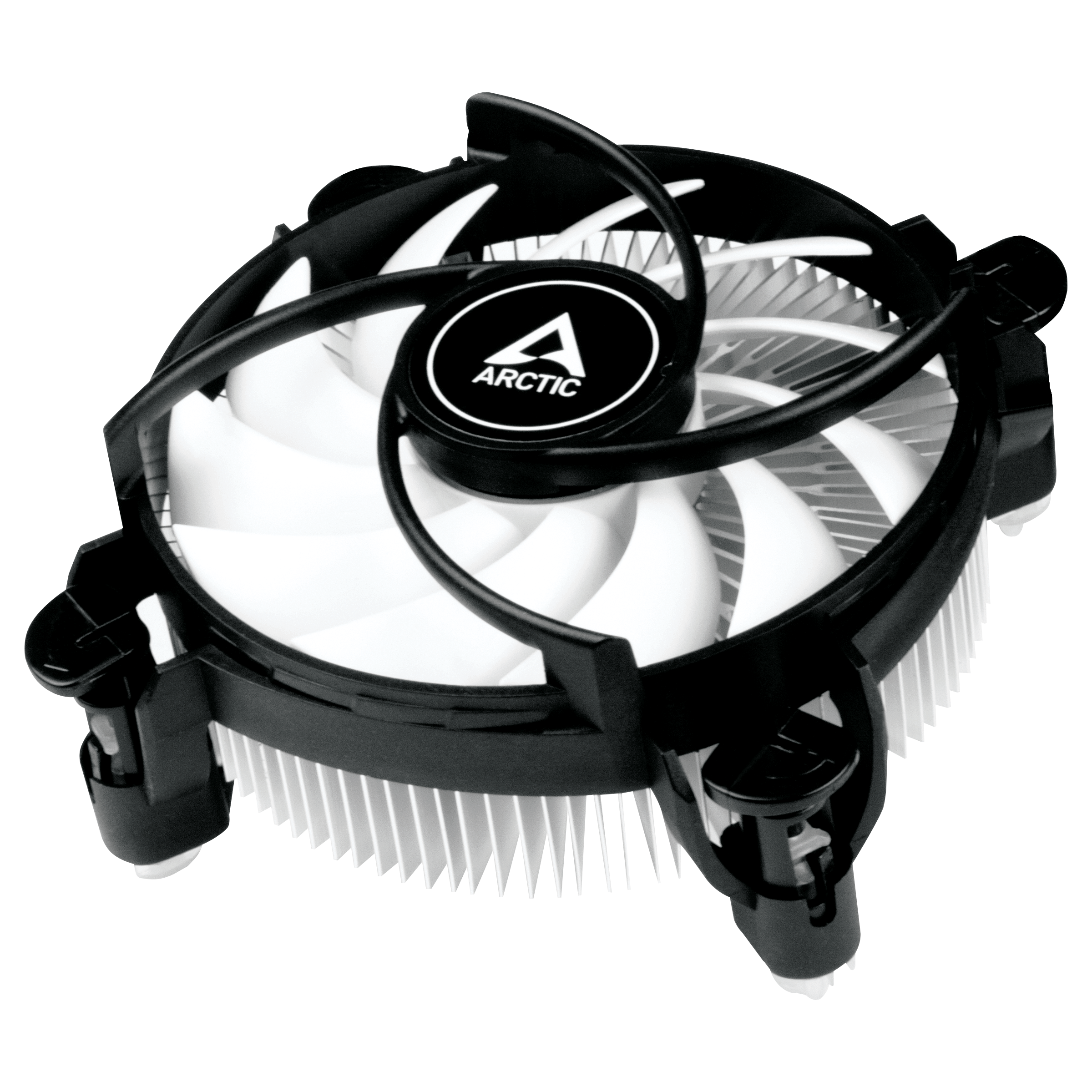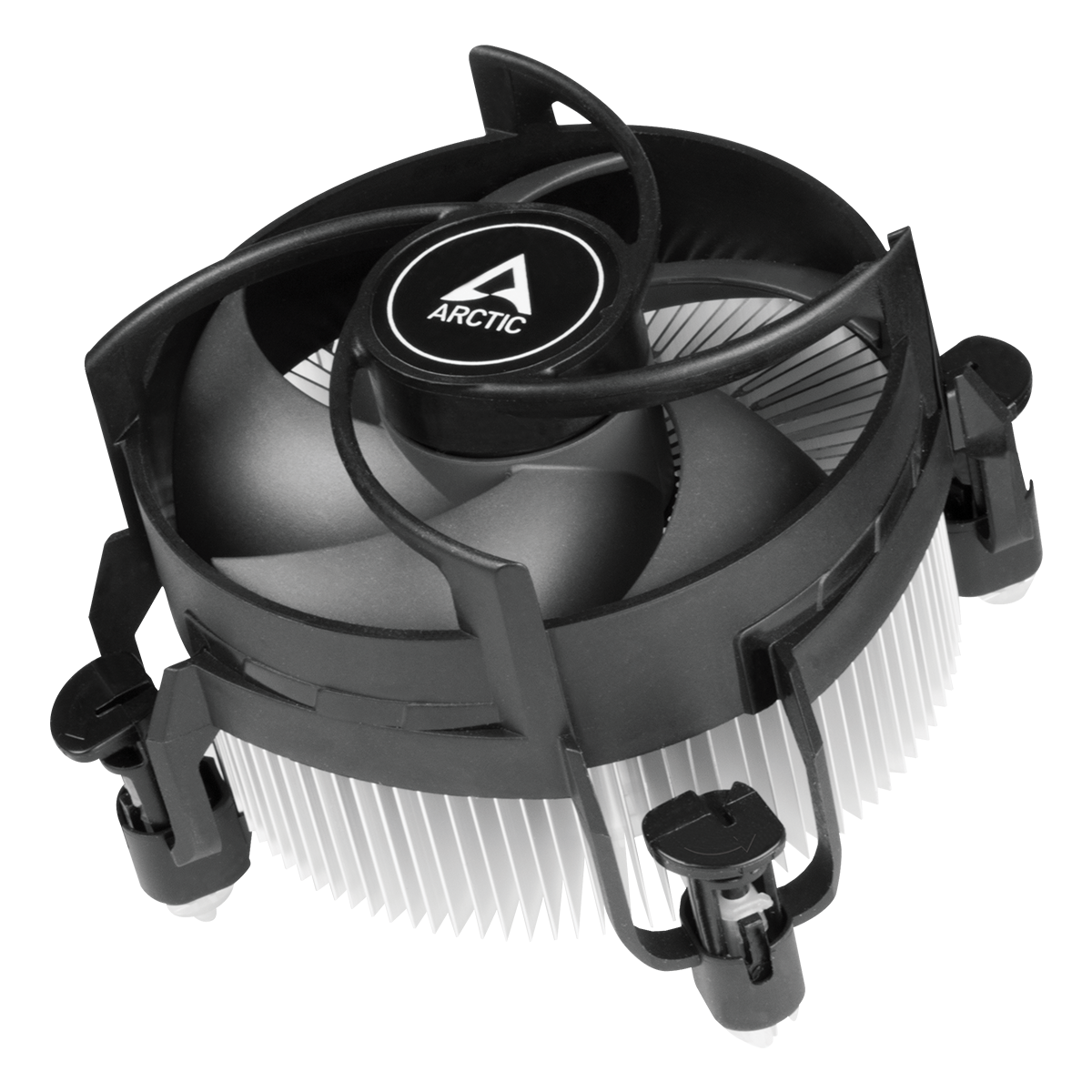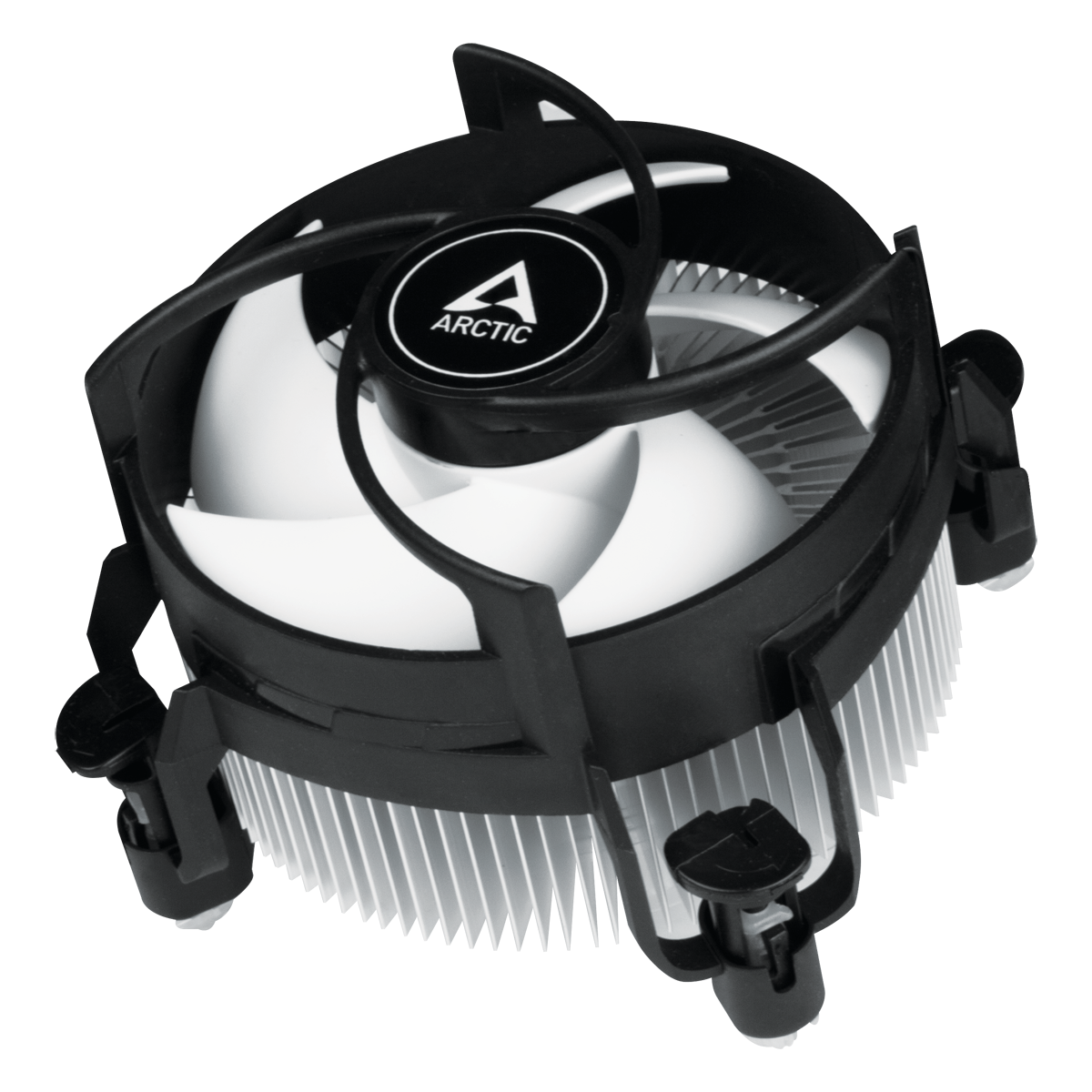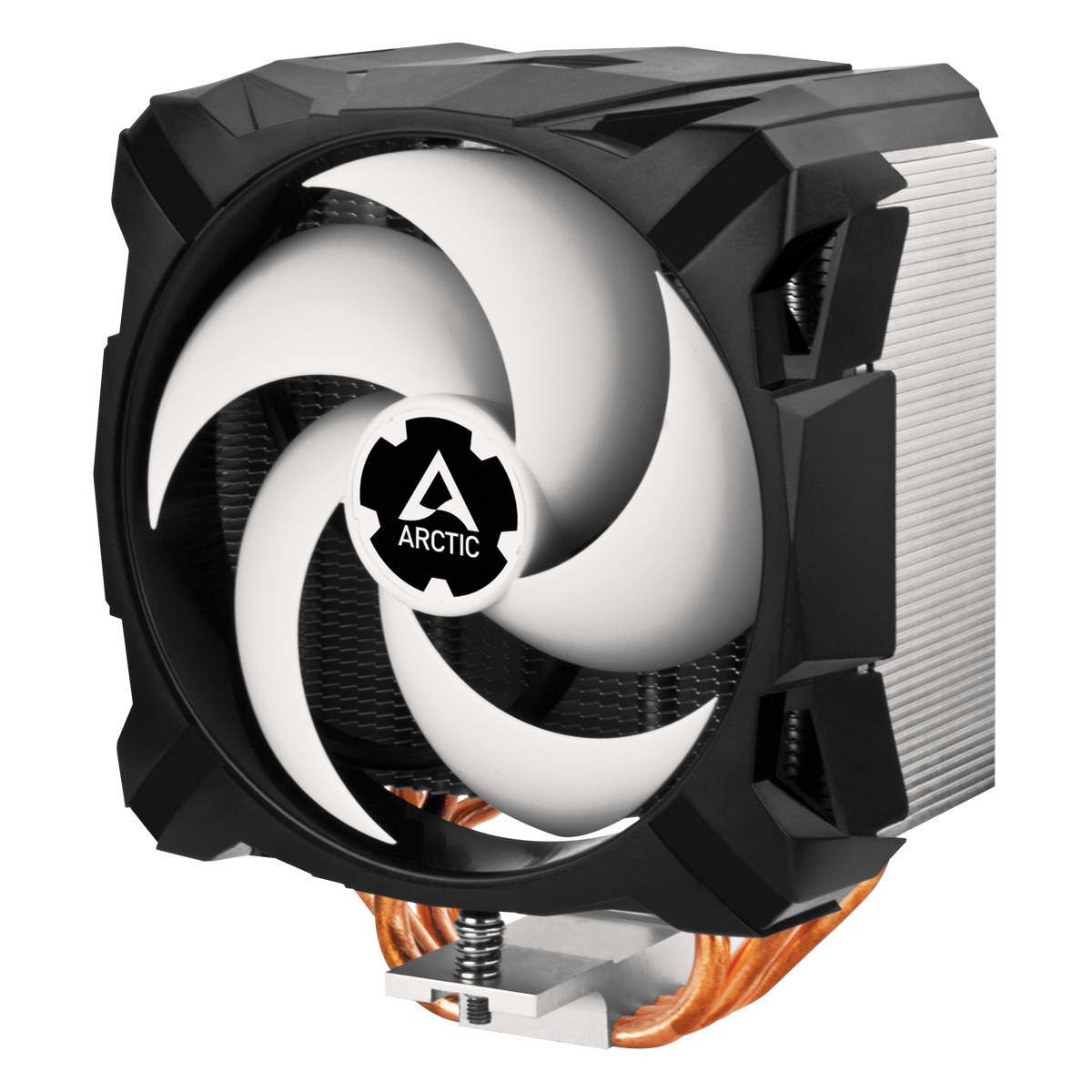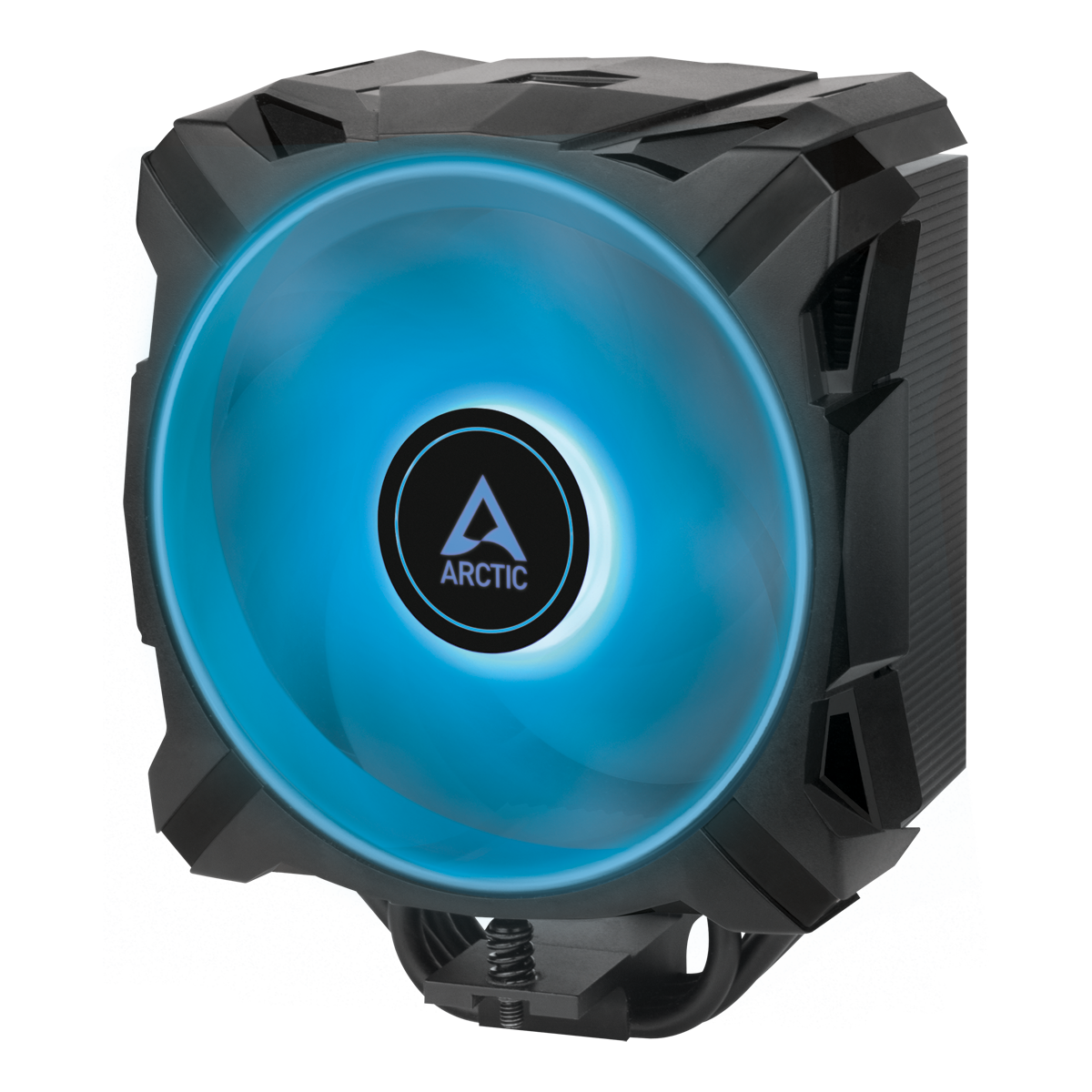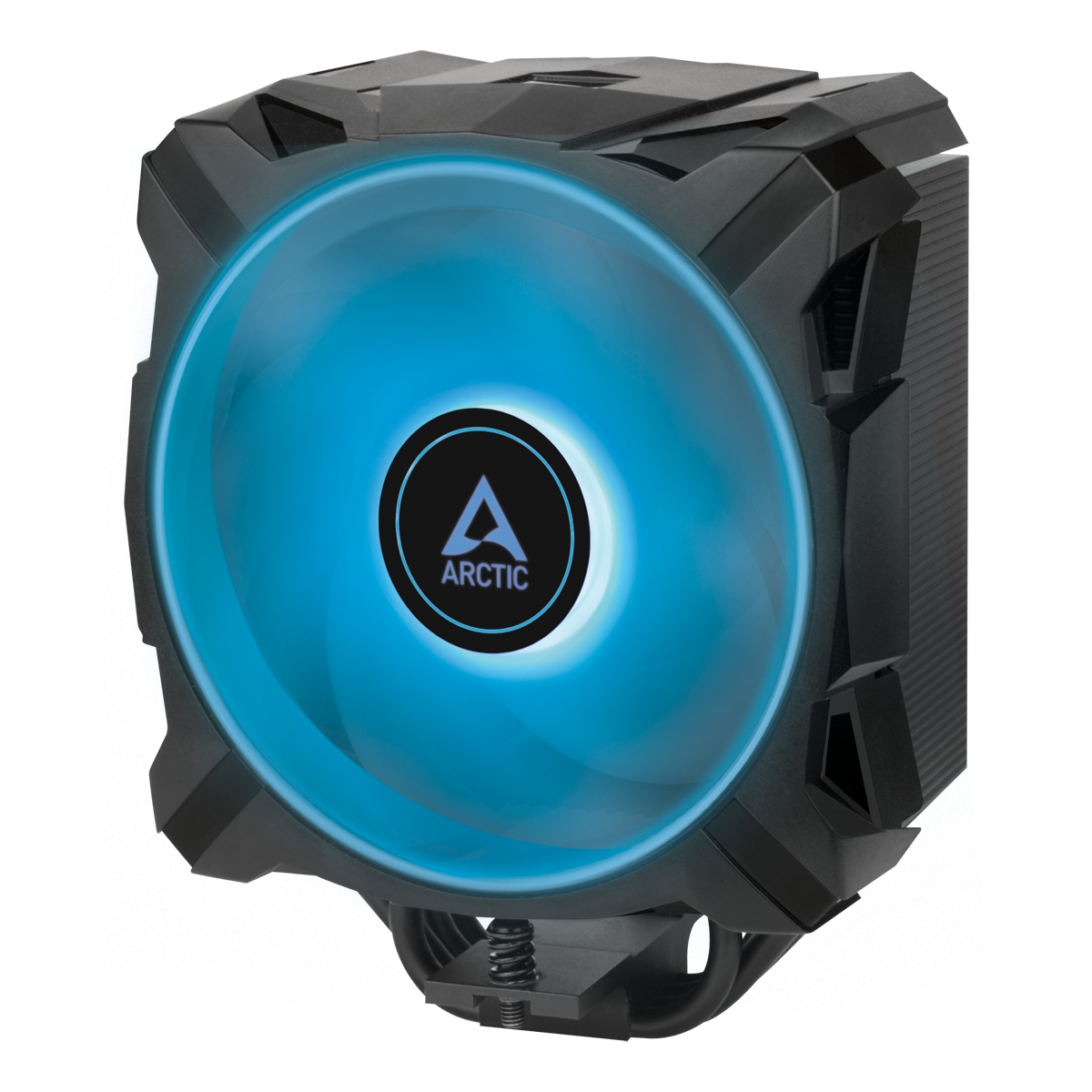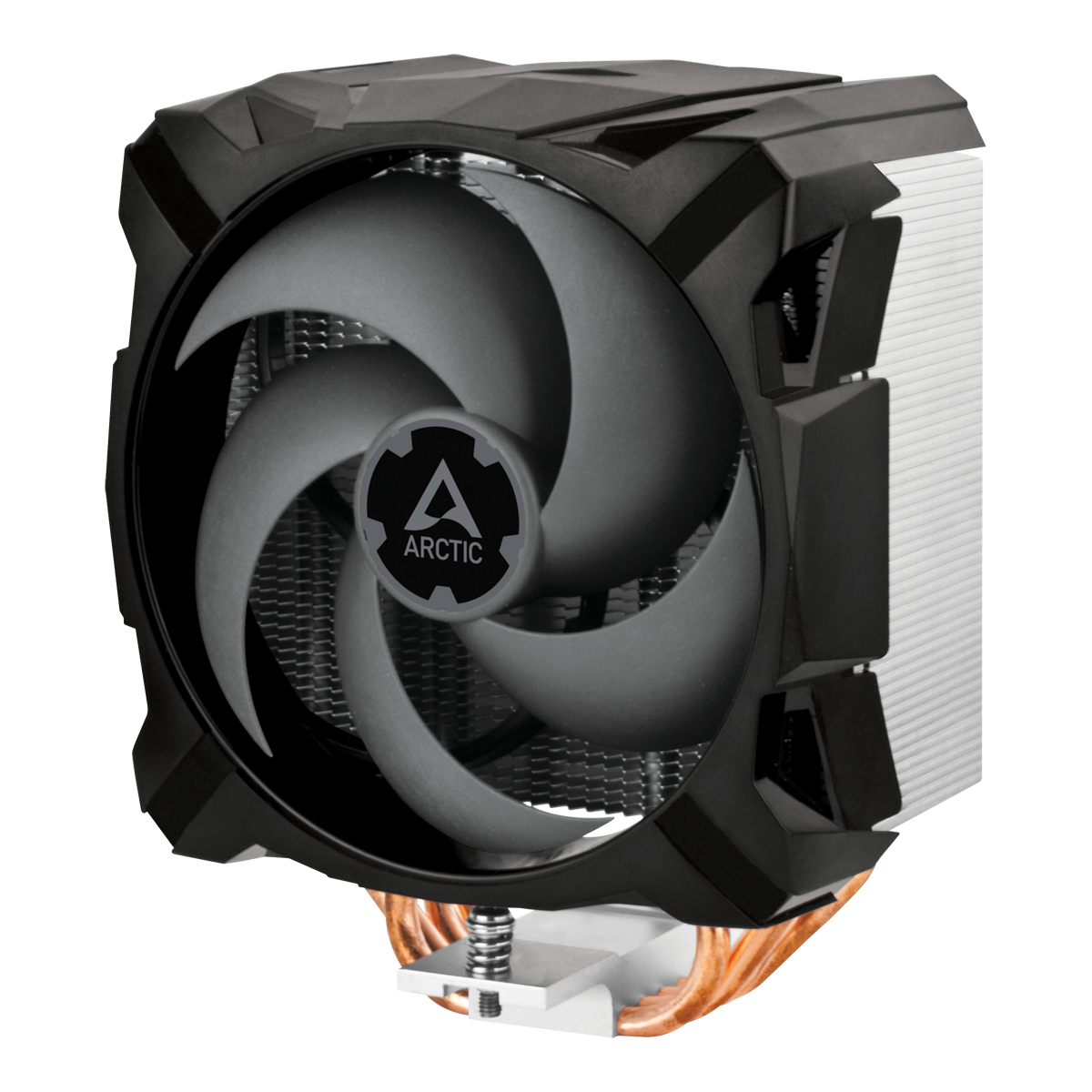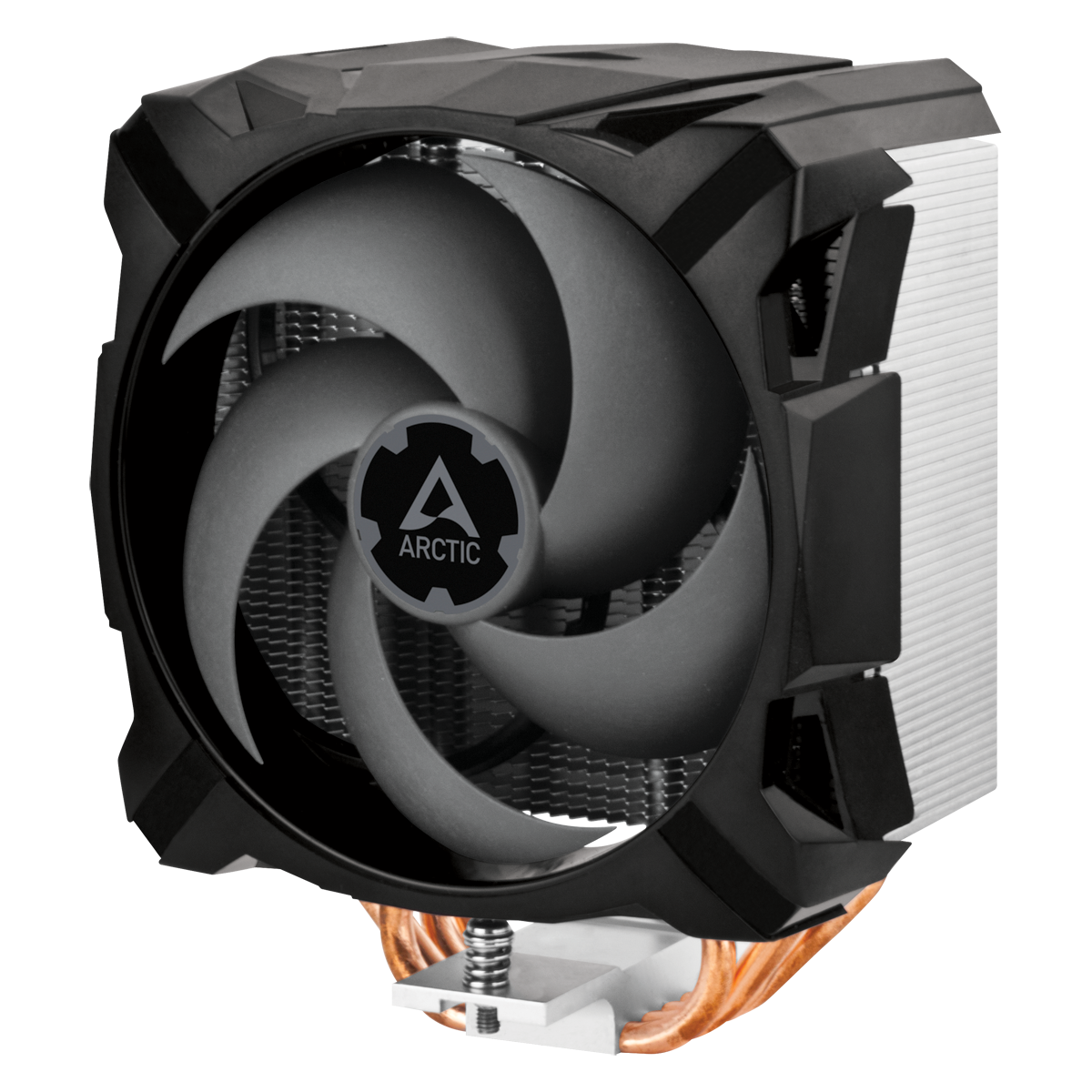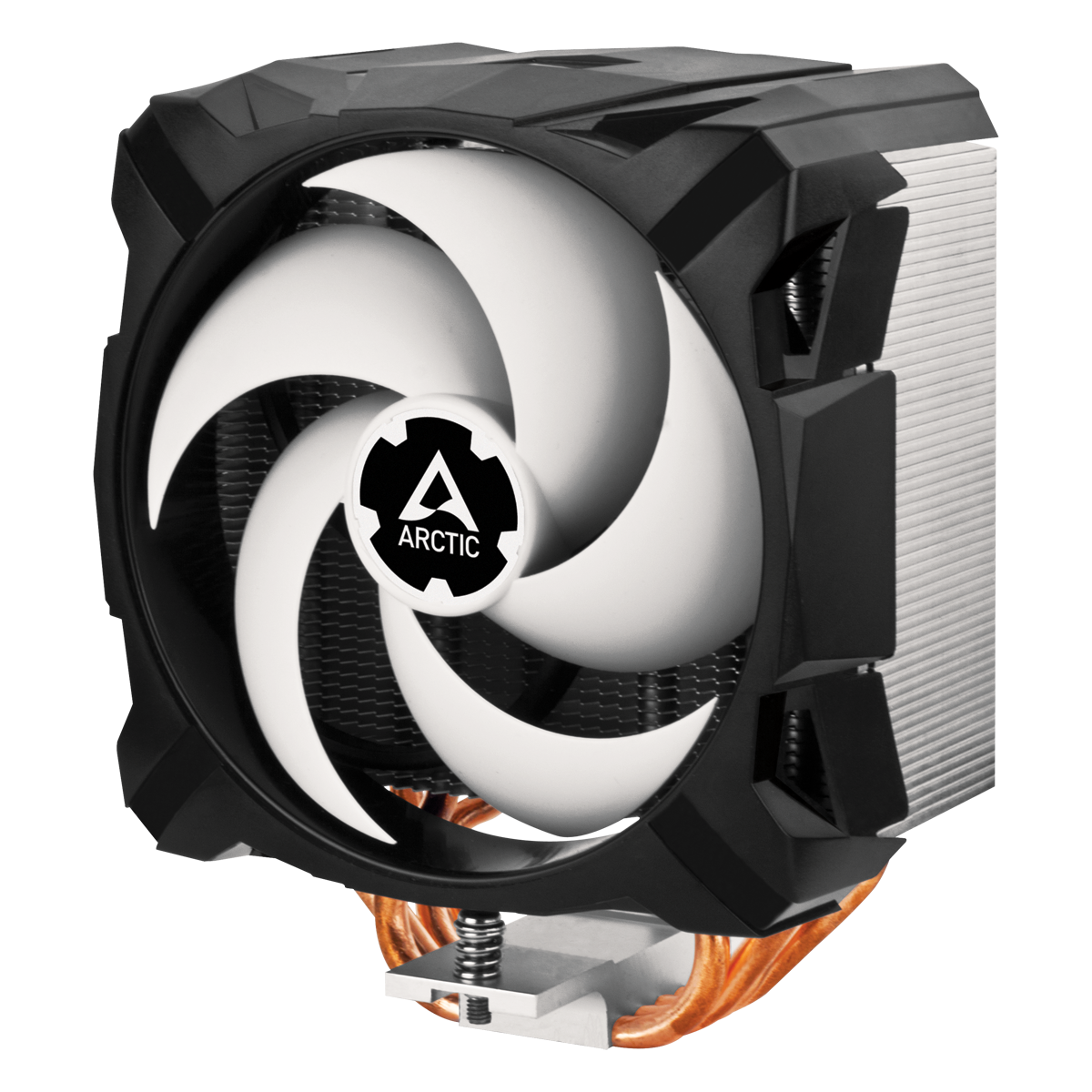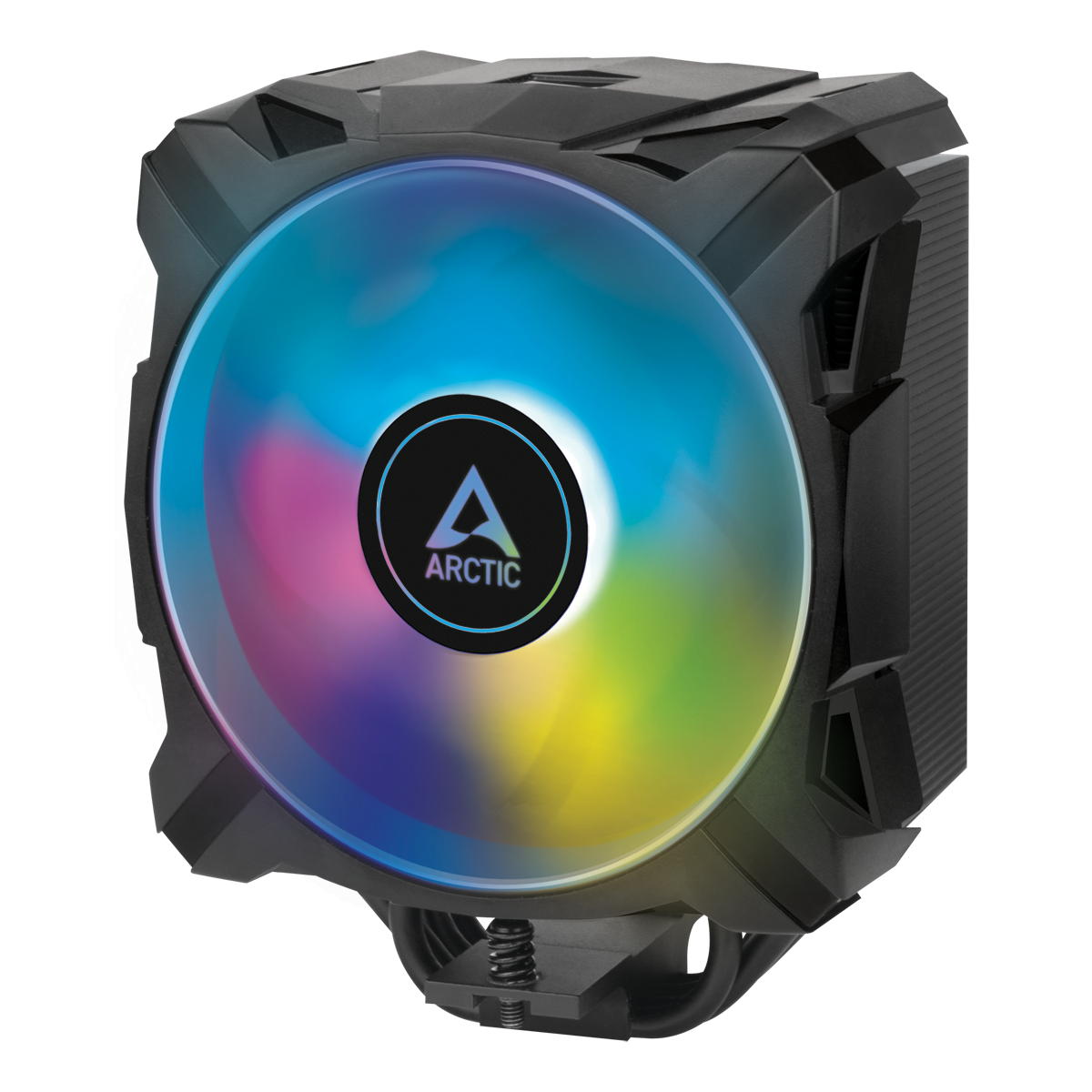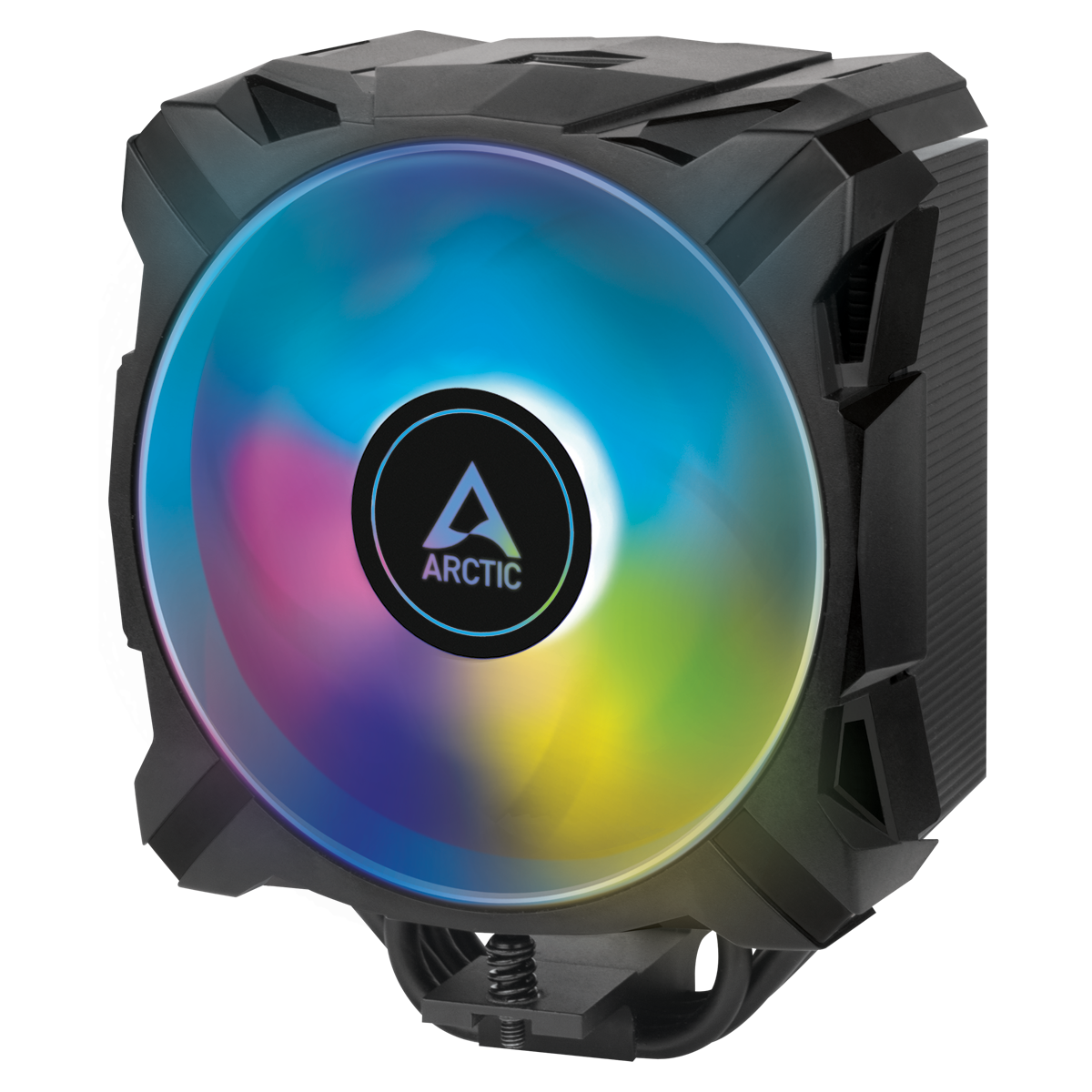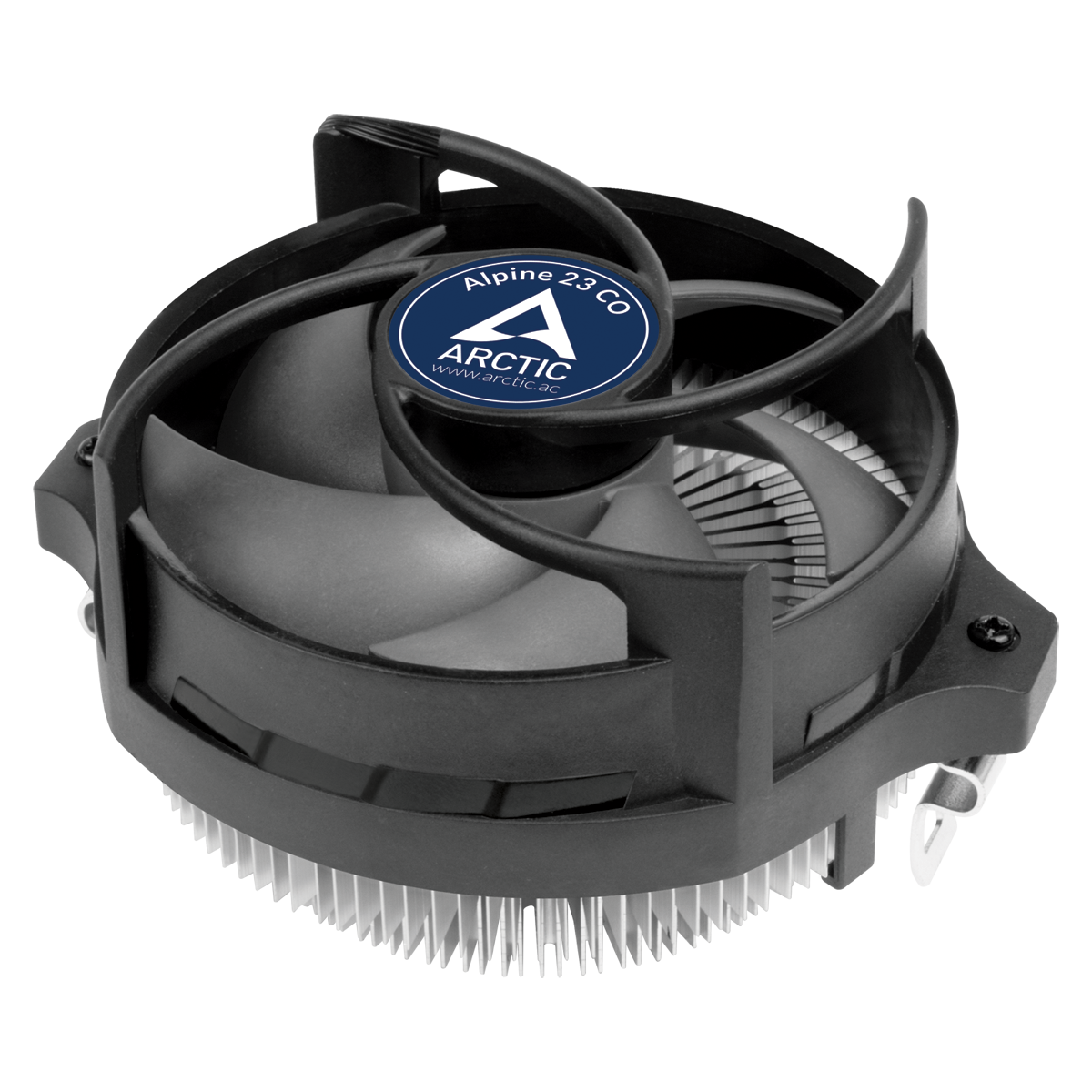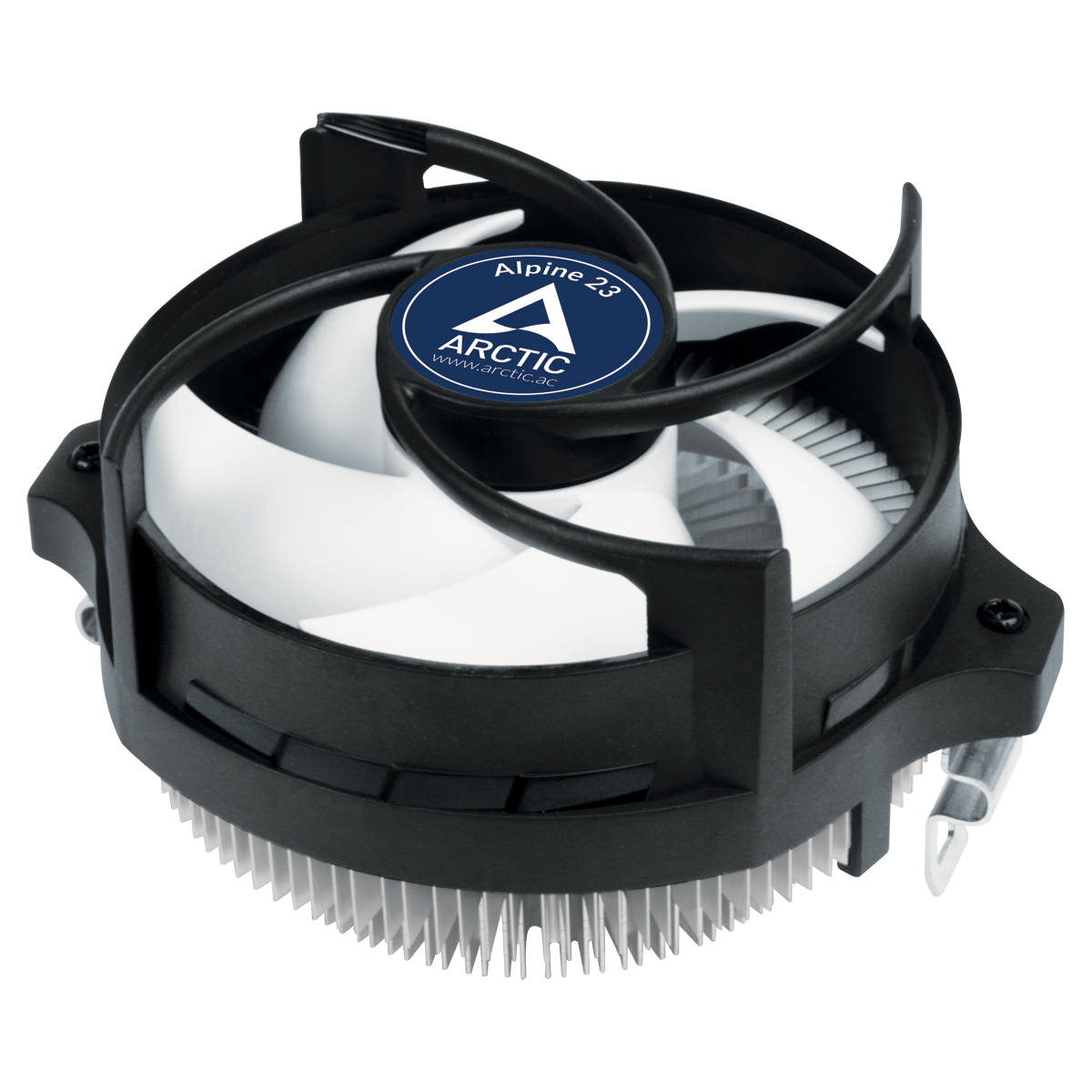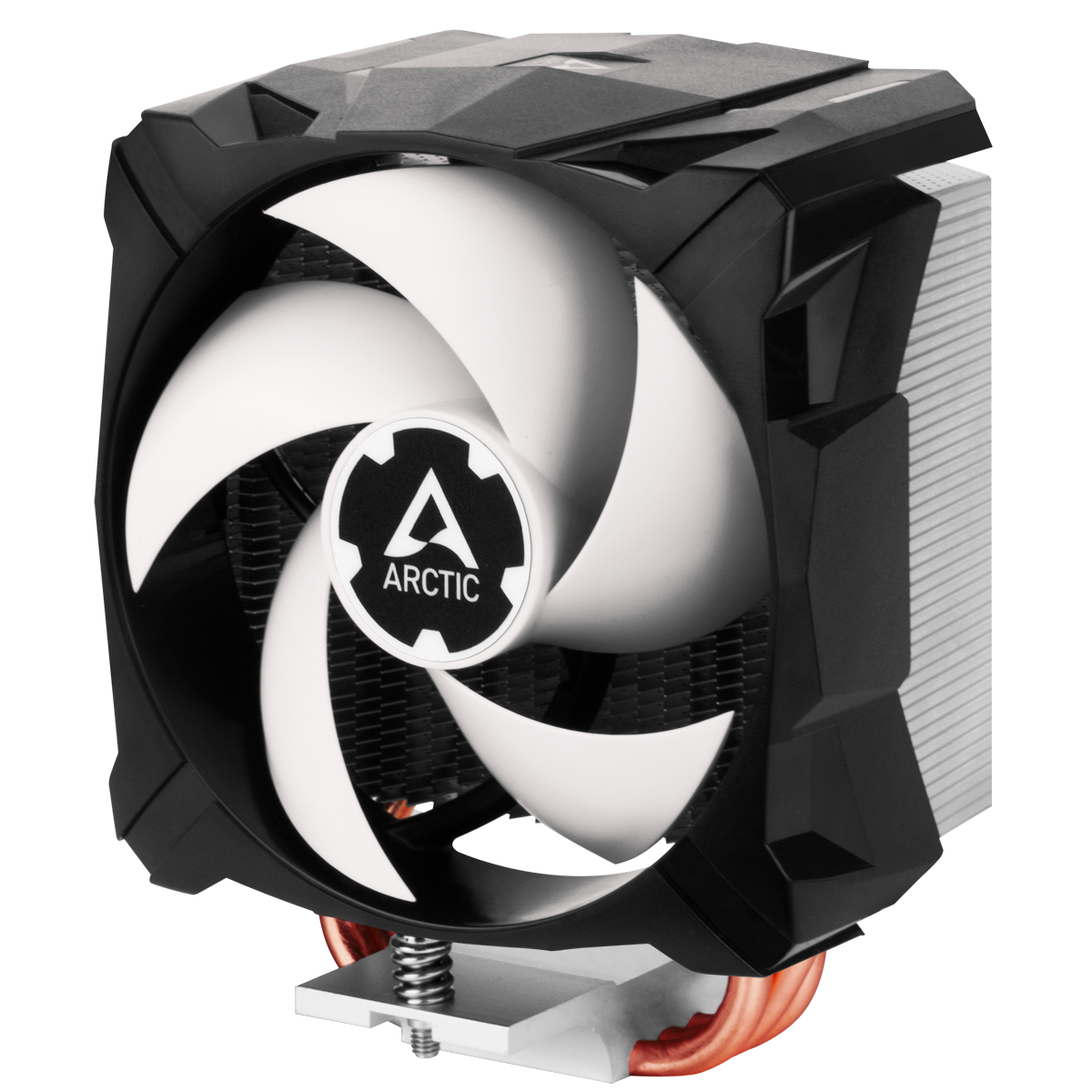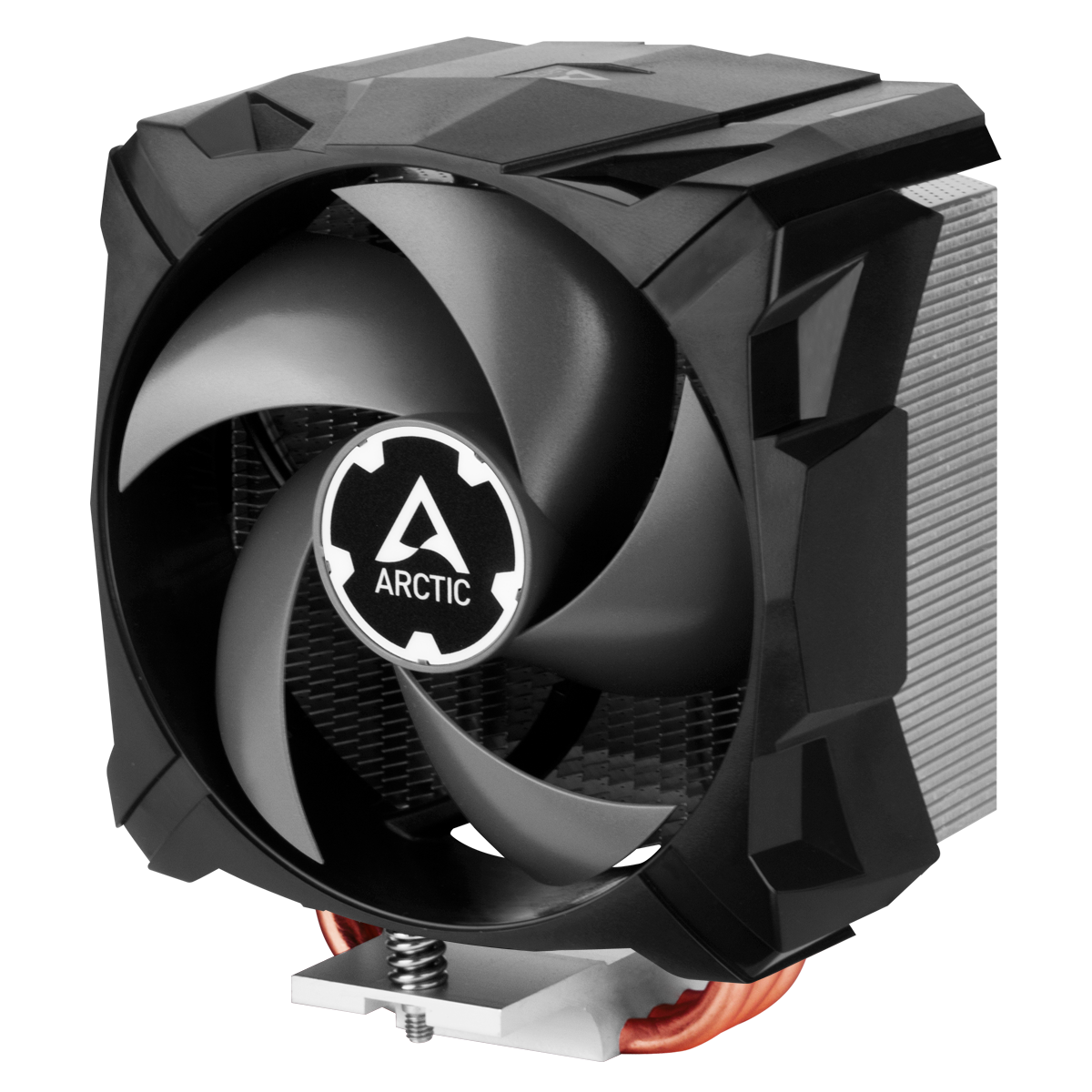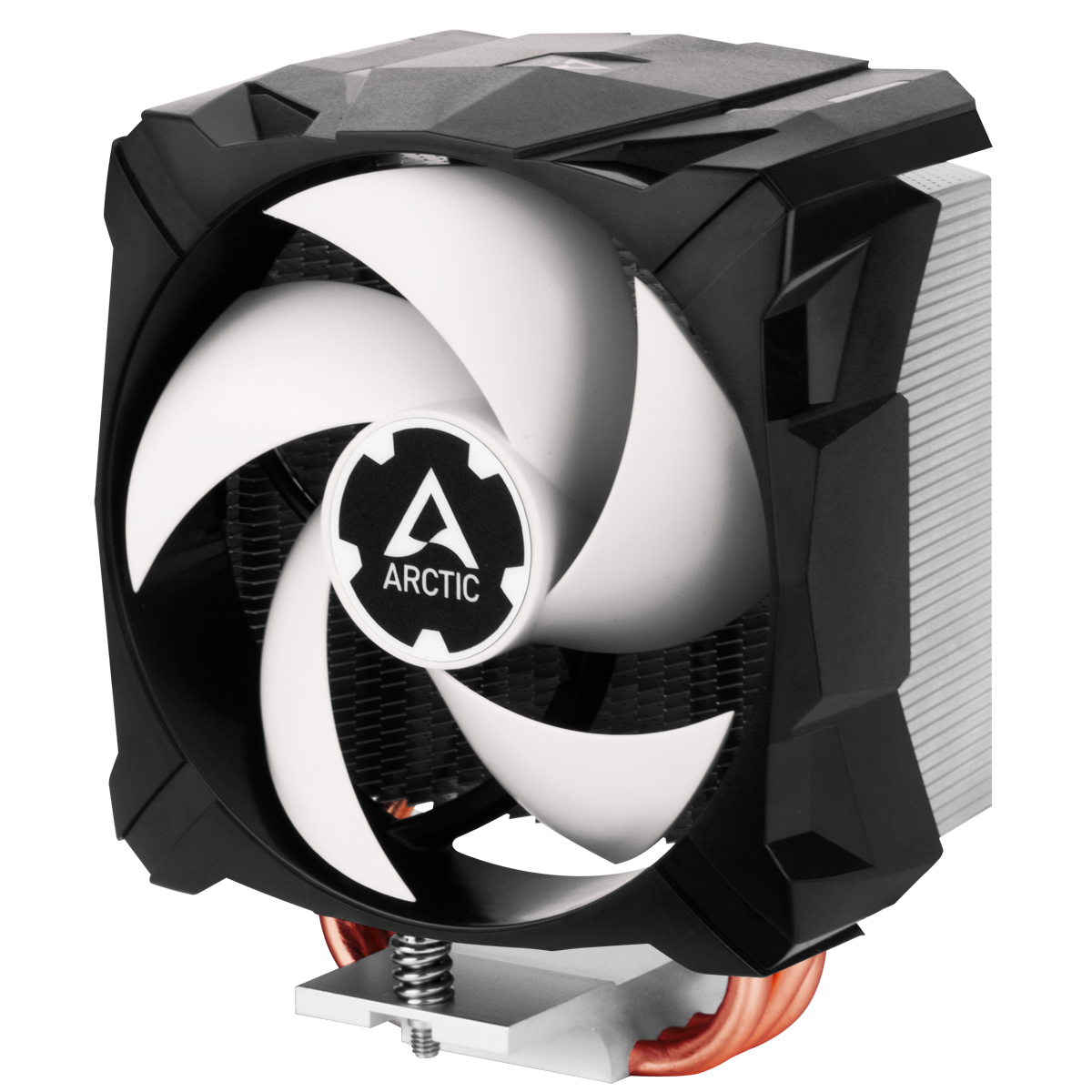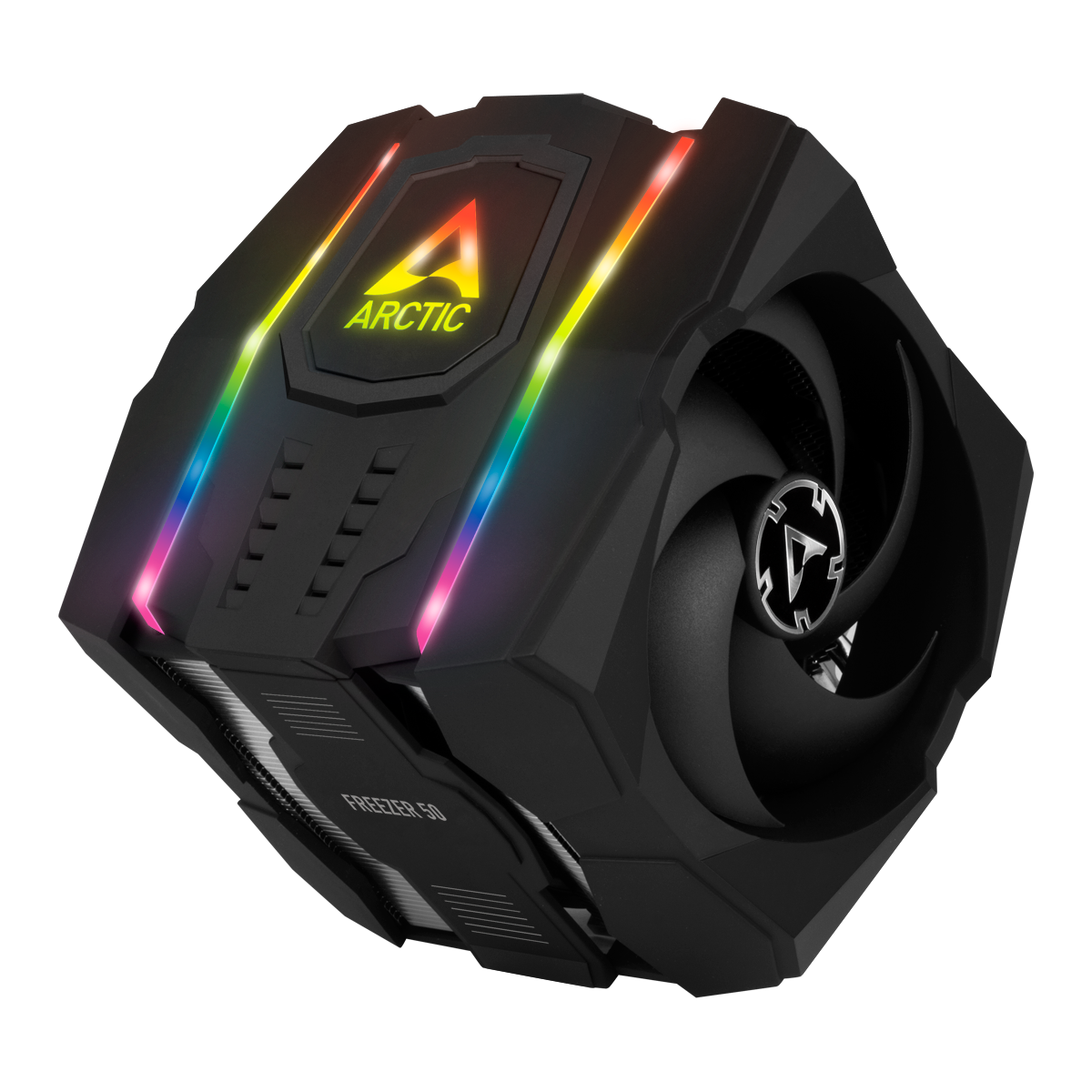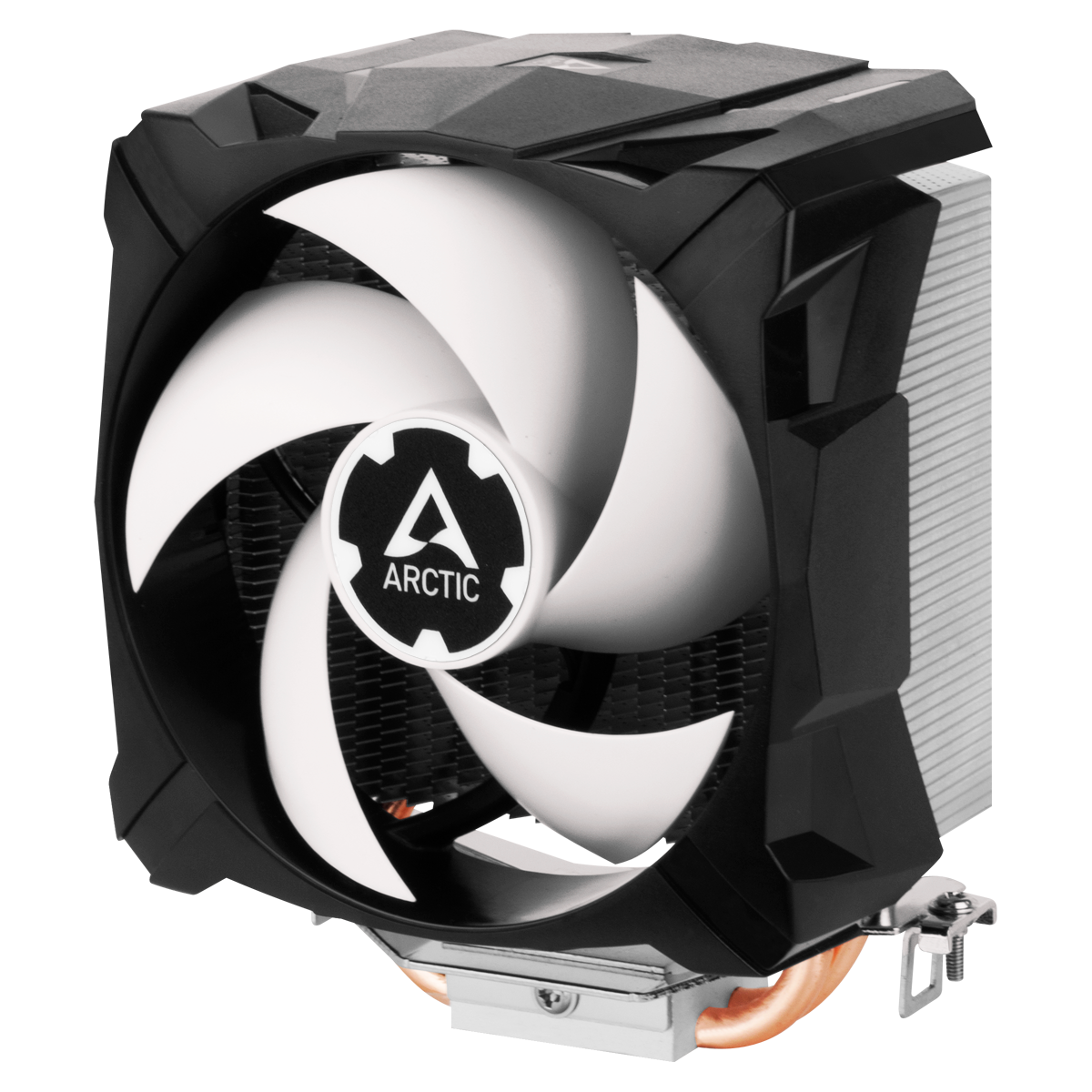€24.95
€20.64
€20.51
€25.96
€12.99
€15.99
€42.99
€39.99
€13.99
€29.99
€30.99
€63.99
The right CPU cooler for every application
What is the difference between active and passive CPU coolers?
Active CPU coolers have a fan, which ensures continuous airflow to dissipate the heat generated by the CPU. The larger the fan diameter and the higher the speed of the fan, the better the cooling performance. Since an increase in the speed also causes an increased noise level, it is important to find an appropriate balance between the fan diameter, fan speed, and size of the heatsink for an effective CPU cooler.
Passive CPU coolers, however, have no fans. The biggest advantage is the completely silent operation. The heat is conducted into the heatsink and discharged from there into the surrounding air. Since air, without additional airflow, is a poor conductor of heat, passive coolers need to have quite large heatsinks to achieve adequate cooling performance, yet are not as powerful as active coolers.
What types of CPU air coolers are there?
In general, you can distinguish the following types of CPU coolers:
- Low Profile coolers (also known as top blowers) are active coolers, which usually use a slightly wider and flatter heat sink on which a fan is mounted. The airflow is thus directed directly toward the CPU / motherboard. The advantage of this cooler is the more compact design, which makes it more common in smaller PC cases. In addition to the CPU, other mainboard components (memory, controller) are cooled slightly, too.
- Tower CPU coolers are active coolers that use a large, vertically protruding heatsink with many cooling fins. The heat of the CPU is directed into the large heatsink and then, depending on the design and size of the cooler, transported by one or more fans. This type of cooler is more powerful than a low-profile cooler, but it also requires more space inside the case. An example of this type of CPU cooler is the ARCTIC Freezer 34 Family & ARCTIC Freezer 35 Family.

